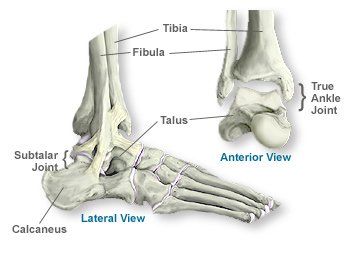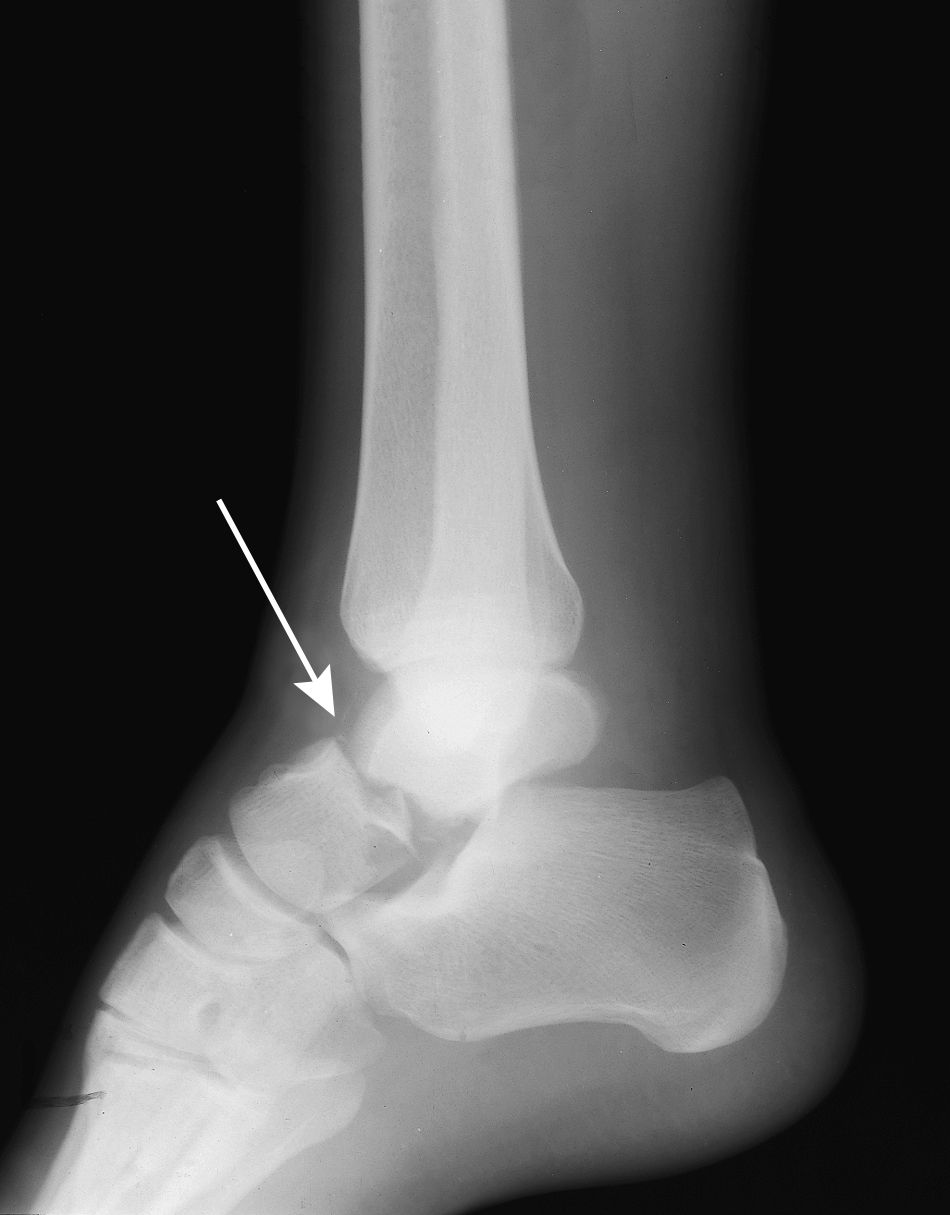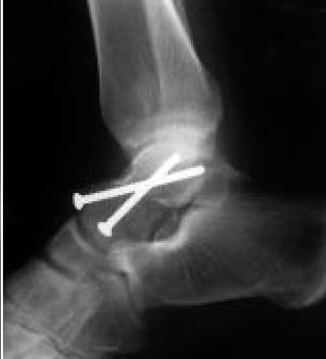Foot & Ankle
Talus Fractures
The talus, a critical bone in the foot, connects the tibia (shin bone) to the calcaneus (heel bone) and plays a vital role in ankle movement. A talus fracture refers to a break in the talus bone, often caused by high-energy trauma, such as a fall, motor vehicle accident, or sports injury.
Understanding Talus Fractures
Given the talus’s role in weight-bearing and ankle function, fractures of this bone can significantly impair movement and lead to long-term complications if not treated promptly.
Talus fractures are relatively uncommon but require careful attention, as their complexity can affect both the bone and surrounding soft tissues. These fractures are classified as:
- Neck Fractures: These fractures occur in the upper part of the talus, typically resulting from high-impact injuries.
- Body Fractures: These fractures affect the central portion of the talus, leading to more complicated outcomes, including an increased risk of arthritis.
- Posterior Fractures: Less common, but can result in complications affecting both the ankle joint and blood supply to the talus.
Talus fractures can lead to reduced mobility, pain, stiffness, and, in some cases, the development of arthritis, making it crucial to seek early intervention for the best recovery outcomes.

Causes and Risk Factors
Talus fractures are primarily caused by high-energy trauma that places significant stress on the ankle joint. Common causes of these fractures include:
- Motor Vehicle Accidents: Direct trauma to the foot during a car accident, especially when the foot is compressed or forced into an unnatural position.
- Falls from Height: When a person falls from a height, such as from a ladder or building, the talus often bears the full impact, leading to fractures.
- Sports Injuries: High-impact activities, such as football, basketball, or sports involving jumping, twisting, or landing, can cause talus fractures when the foot makes abrupt contact with the ground.
- Twisting Injuries: Sudden twisting or missteps, particularly when the foot is planted firmly on the ground, can cause fractures to the talus.
- Osteoporosis: Weakened bones, as seen in osteoporosis, can make the talus more susceptible to fractures, even with minimal trauma.
Other contributing risk factors include poor footwear, previous foot or ankle injuries, obesity, and age, with talus fractures occurring more frequently in people aged 20 to 40 years who participate in sports or physically demanding activities.
Symptoms of Talus Fractures
Talus fractures can vary in severity, but common symptoms include:
- Severe Pain: Immediate, intense pain in the ankle, especially during movement or weight-bearing.
- Swelling and Bruising: Significant swelling around the ankle, often accompanied by bruising extending to the foot or lower leg.
- Inability to Bear Weight: Difficulty or complete inability to bear weight on the affected foot due to pain and instability.
- Deformity: Visible deformity or misalignment of the ankle joint, particularly in displaced fractures.
- Limited Range of Motion: Stiffness or reduced flexibility in the ankle joint, particularly when attempting to point or flex the toes.
- Instability: A feeling of instability or weakness in the ankle, especially when walking or standing on the injured leg.
If you experience any of these symptoms after an injury, it's important to seek immediate medical attention. Timely intervention and proper treatment are essential to avoid complications and promote optimal recovery.
Diagnosis of Talus Fractures
Diagnosing a talus fracture involves a comprehensive physical examination. Dr. Ryan du Sart will assess pain, swelling, deformity, and range of motion in the injured ankle. Imaging studies are crucial to accurately diagnose the fracture and determine the appropriate treatment:
- X-rays: The primary imaging tool to identify fractures and assess bone alignment.
- CT Scans: For complex fractures, a CT scan provides detailed 3D imaging to assess bone, joint, and soft tissue involvement.
- MRI: If there’s concern for soft tissue damage (e.g., ligament or tendon injuries), MRI is used to evaluate the
extent of damage.



Treatment Options for Talus Fractures
The treatment of a talus fracture depends on the location, severity, and type of fracture. Dr. Ryan du Sart offers both non-surgical and surgical treatment options based on the patient's needs and goals for recovery.
Non-Surgical Treatment
For mild, non-displaced fractures, non-surgical options are often effective. The treatment includes:
- Rest and Immobilisation: The foot will be immobilised in a cast, boot, or splint to promote proper healing and prevent further injury.
- Ice and Elevation: Applying ice and elevating the foot helps reduce swelling and manage pain.
- Pain Management: Medications like paracetamol or NSAIDs (nonsteroidal anti-inflammatory drugs) may be prescribed to control pain and inflammation.
- Non-weight Bearing: Patients are advised to avoid placing weight on the injured foot for several weeks to prevent further stress on the fractured talus.
Surgical Treatment
In cases of displaced fractures or fractures involving the joint surface (intra-articular), surgery may be necessary. Surgical options include:
- Open Reduction and Internal Fixation (ORIF): This procedure involves realigning the fractured talus and using plates, screws, or rods to stabilise the bones while they heal. ORIF is commonly used for displaced fractures to restore the normal anatomy of the foot.
- Bone Grafting: In cases where the bone has been severely damaged, bone grafting can be used to stimulate the healing process by providing new bone material to aid in repair.
- External Fixation: For more complex fractures or soft tissue involvement, an external frame may be used to stabilise the bones during the healing phase.
Recovery and Rehabilitation
The recovery timeline for talus fractures depends on the severity of the injury and the type of treatment used. Typical recovery steps include:
- Initial Immobilisation: The foot will be immobilised for 6–8 weeks, during which time weight-bearing should be avoided.
- Progressive Rehabilitation: Once the bone has healed sufficiently, rehabilitation begins, focusing on restoring strength, flexibility, and range of motion.
- Gradual Weight-Bearing: As the fracture heals, patients can gradually begin to bear weight on the affected foot, typically with a walking boot or stiff-soled shoe.
- Full Recovery: Recovery can take anywhere from 3 to 6 months, with athletes or individuals involved in high-impact activities requiring additional rehabilitation before returning to normal activities.
Preventing Future Talus Injuries
While not all talus fractures can be prevented, there are steps you can take to reduce the risk of injury:
- Proper Footwear: Wear shoes that provide good arch support and cushioning to reduce the risk of injury.
- Avoid High-Risk Activities: Limit participation in activities that involve high-impact or sudden directional changes, especially if you are prone to ankle instability.
- Strengthening Exercises: Strengthen the muscles and ligaments around the ankle to improve stability and prevent fractures.
- Balance and Coordination: Improve balance and coordination to reduce the risk of falls and missteps that could lead to injury.
Why Choose Dr. Ryan du Sart?
Dr. Ryan du Sart is a highly trained orthopaedic surgeon with extensive experience in diagnosing and treating complex foot and ankle fractures, including talus fractures. His expertise in minimally invasive techniques and patient-centred care ensures that each treatment plan is tailored to meet the specific needs of the patient. Dr. du Sart’s approach optimises recovery and outcomes for every patient.
Book a Consultation
If you suspect a talus fracture or are experiencing persistent pain in the ankle, it’s essential to seek timely medical attention. Early diagnosis and appropriate treatment can significantly improve your chances of a successful recovery. Schedule a consultation with Dr. Ryan du Sart today.
Phone: (08) 9779 9767
Email: admin@ryandusart.com.au
Locations:
6 Higgins Street, South Bunbury, WA 6230
20 Prince Street, Busselton, WA 6280
References:
- American Academy of Orthopaedic Surgeons (AAOS). (2020). Talus fractures: Diagnosis and management. https://www.aaos.org
- Foot and Ankle International. (2021). Outcomes of talus fractures: Surgical and non-surgical management. https://journals.sagepub.com
- Cleveland Clinic. (2021). Talus fractures: Diagnosis and treatment. https://my.clevelandclinic.org
- Royal Australian College of Surgeons (RACS). (2020). Foot and Ankle Trauma. https://www.surgeons.org

